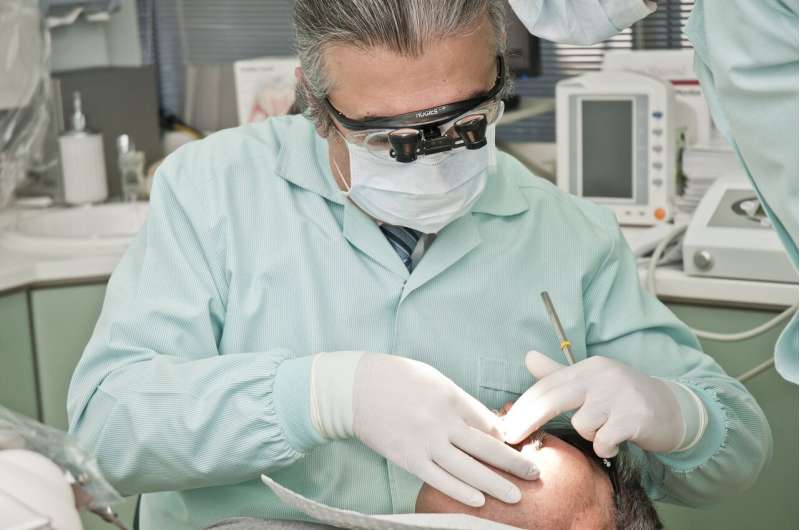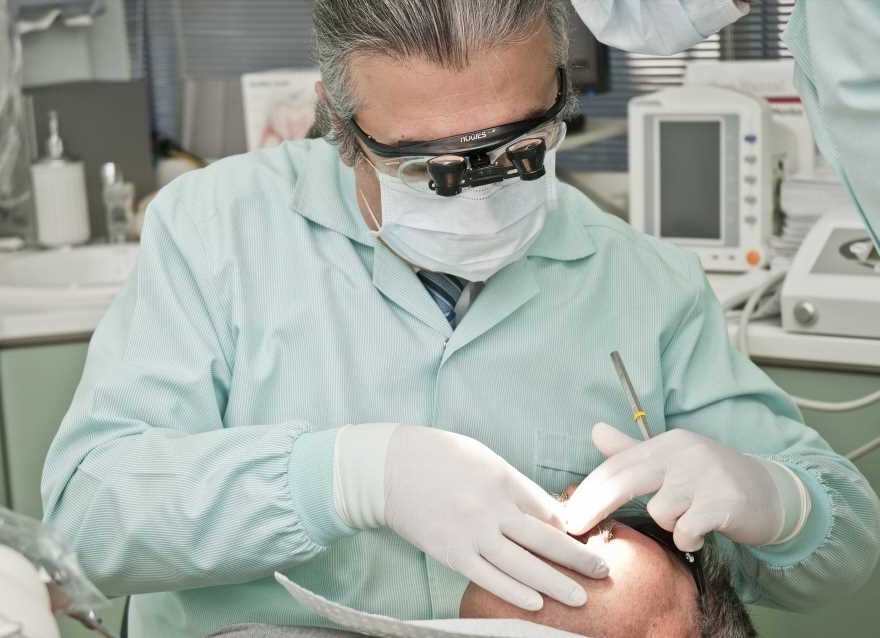
People who are at high risk of developing a life-threatening heart infection should be given antibiotics before undergoing invasive dental procedures, according to new research from the University of Sheffield.
These results suggest that current NICE guidelines, advising against routine use of antibiotics before invasive dental procedures for those at high infective endocarditis (IE) risk, should be reconsidered.
The study, led by Professor Martin Thornhill from the University’s School of Clinical Dentistry, suggests that current UK guidelines against the use of antibiotics, issued by the National Institute for Health and Care Excellence (NICE), could be putting high-risk patients at unnecessary extra risk when undergoing invasive dental procedures.
At the same time, the results validate guidance in the U.S., Europe and elsewhere that recommend that those at high-risk be given antibiotics before invasive dental procedures.
Professor Martin Thornhill, Professor of Translational Research in Dentistry at the University of Sheffield and lead author of the study, said, “Infective endocarditis is a rare but devastating heart infection in which around 30 percent of people die within the first year of developing it. We know that 30-45 percent of IE cases are caused by bacteria that derive from the mouth, but what has been unclear and disputed until now is whether there is a strong link between invasive dental procedures, such as tooth extractions, and IE in patients who are at high risk of developing the infection.
“Results from our study validate for the first time the guidance of the major guideline committees around the world, such as The American Heart Association and the European Society for Cardiology, which recommend that those at high IE risk should receive AP before undergoing invasive dental procedures. In contrast, our data suggests that current UK NICE guidance against the routine use of AP, could be putting high risk patients at unnecessary extra risk of developing IE, and should be reviewed in light of this new evidence.”
Published in the Journal of the American College of Cardiology, the research is the biggest ever study to examine the association between infective endocarditis—a life-threatening infection of the heart often caused by bacteria that derive from the mouth—and invasive dental procedures.
The study was performed in the U.S. where patients at high IE-risk (those with artificial or repaired heart valves, patients with certain congenital heart conditions or a previous history of IE) are recommended to receive antibiotics before invasive dental procedures—called antibiotic prophylaxis (AP)—to reduce their risk of developing IE.
The research is the first to demonstrate that AP reduces the risk of IE following invasive dental treatment for those at high-risk of developing the infection.
Since the 1950s, guideline committees around the world have recommended that people at increased risk of IE should be given AP before undergoing invasive dental procedures. However, there has never been any robust research directly linking dental procedures with the development of IE or any study to demonstrate that AP is effective in reducing the risk of developing IE.
Due to this lack of evidence, concerns about the unnecessary use of antibiotics and the risk that AP could promote the development of antibiotic resistant bacteria, guideline committees have since reduced the number of people that AP is recommended for—recommending that only those at high risk for IE should receive AP before invasive dental procedures. In the UK, however, NICE went even further, stating, “Antibiotic prophylaxis against infective endocarditis is not recommended routinely for people undergoing dental procedures.”
The study from Sheffield analyzed the medical history of nearly eight million people in the U.S. over a 16 month period, including 36,773 individuals at high-risk of IE. The researchers looked at whether the patients had invasive dental treatment, if they then went on to develop IE within 30 days and whether they had been given AP before the procedure.
Researchers found that 3,774 of those studied developed IE within 30 days of dental treatment. They also found that the risk of developing IE was 160 times greater in those at high IE-risk than in the general low-risk population.
The association between invasive dental procedures an IE was particularly strong for dental extractions and oral surgical procedures. For patients at high IE-risk, the risk of developing IE was one in every 250 extractions and one in every 100 oral surgery procedures without AP cover. The risk in the general low risk population was extremely small.
The study found however, that only 32.6 percent of high IE-risk patients received AP before invasive dental procedures. This allowed the researchers to study the effectiveness of AP. They found that the risk of developing IE was nearly 10 times greater when dental extractions were performed in high-risk patients without AP cover than when performed with AP cover. Similarly, the risk of IE was 12.5 times greater when oral surgery procedures were performed in high-risk patients without AP cover than when performed with AP cover.
For the U.S., even though the study’s results validate The American Heart Association guidance, the research found that compliance with this advice was low—only 32.6 percent of those at high risk of IE were given AP before undergoing invasive dental procedures.
Source: Read Full Article
